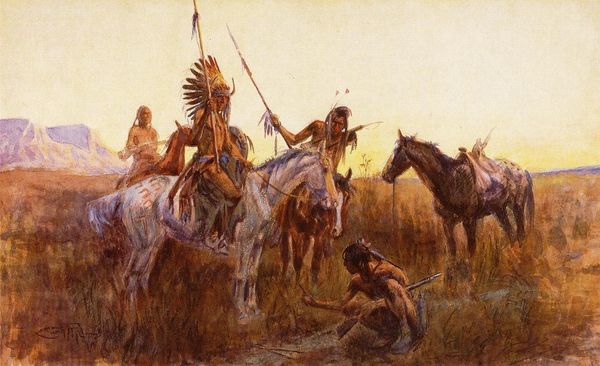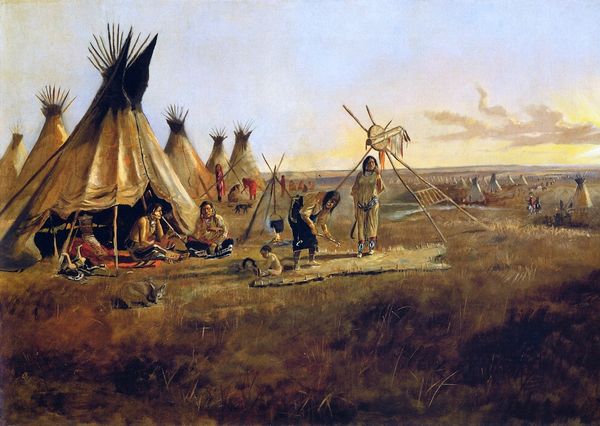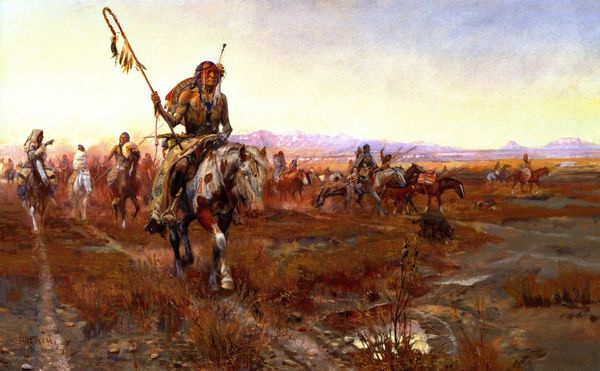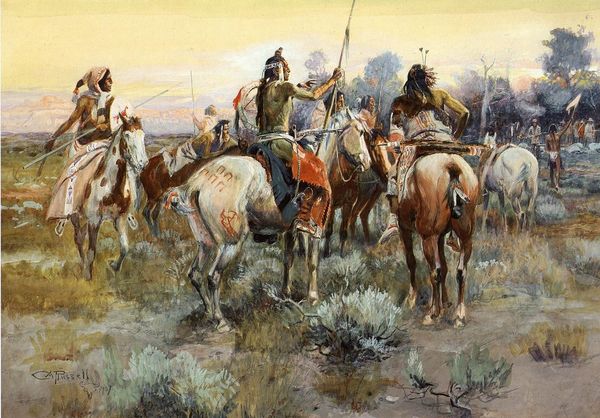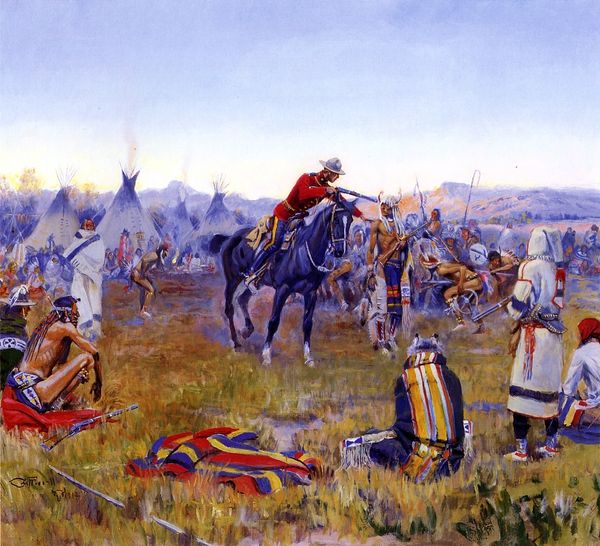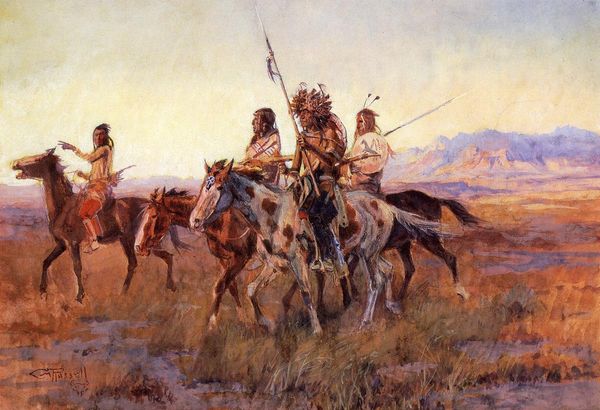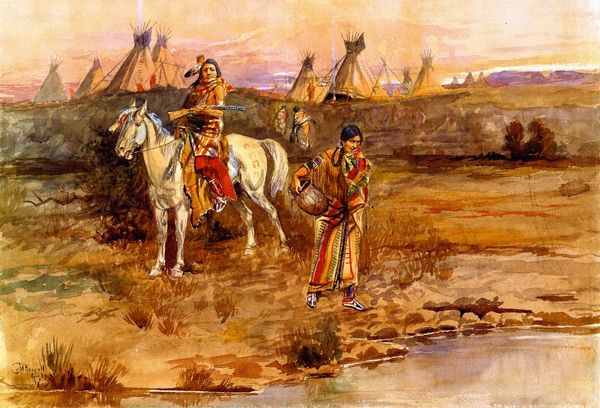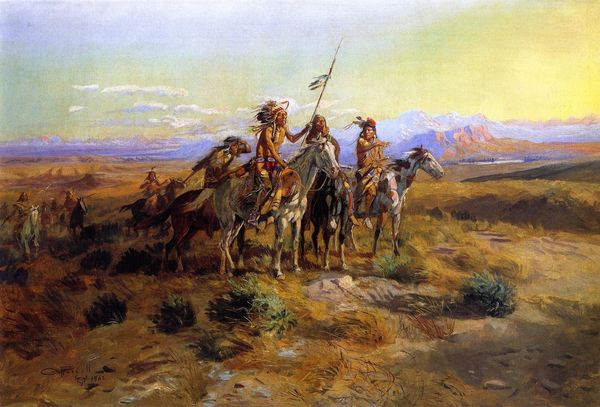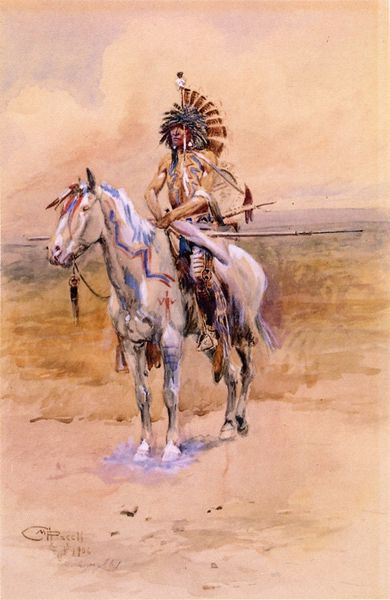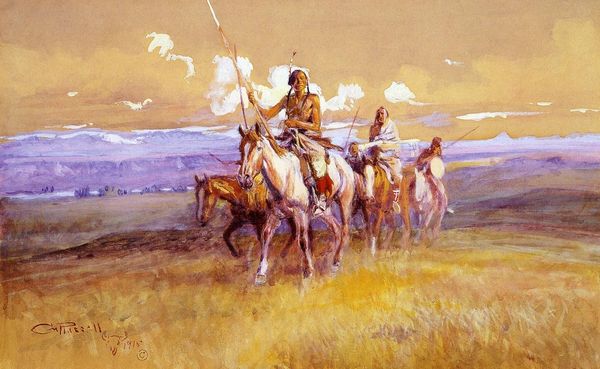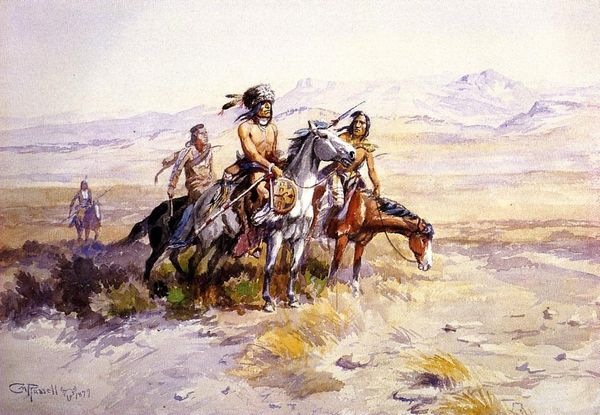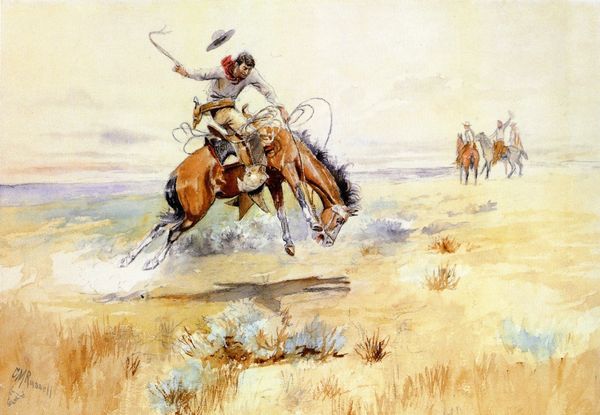
painting, oil-paint
#
narrative-art
#
painting
#
oil-paint
#
landscape
#
oil painting
Copyright: Public domain
Editor: Here we have Charles M. Russell's "Cowboy Bargaining for an Indian Girl," painted in 1895 using oil paint. The composition strikes me immediately with its rather blunt portrayal of negotiation, and the rough, earthy tones underscore the frontier setting. What do you see in this piece? Curator: I see a direct engagement with the material realities of the American West. The oil paint itself, thickly applied, becomes almost like the very earth it depicts. Look at the cowboy’s stance, how it’s rendered: is that confident or conciliatory? It suggests a specific relationship to the materials of trade and the social dynamics in play, wouldn't you agree? Editor: It does feel carefully constructed. But what about the portrayal of Indigenous people? Curator: Precisely! Note the craftsmanship in their clothing and tools—how is that valued against the implied value of the "Indian girl?" The painting demands we analyze the means of production within the Indigenous community, versus the extractive, exploitative relationship the cowboy represents. Who benefits from whose labor here? Editor: I hadn't thought about it that way. So, it's less about romanticizing the West, and more about the hard economics and power structures? Curator: Absolutely. Russell presents a snapshot of resource allocation and human exchange – a very material exchange at that. This painting offers an incisive, if uncomfortable, look at frontier consumption and the inherent imbalances embedded in every painted stroke. Editor: This makes me see the whole piece in a completely different light. It's less of a story and more of a statement. Curator: Exactly, by highlighting the physical transactions within the canvas and focusing on production values it reframes Western expansion through the brutal lens of materiality. A real lesson to be learned here.
Comments
No comments
Be the first to comment and join the conversation on the ultimate creative platform.
